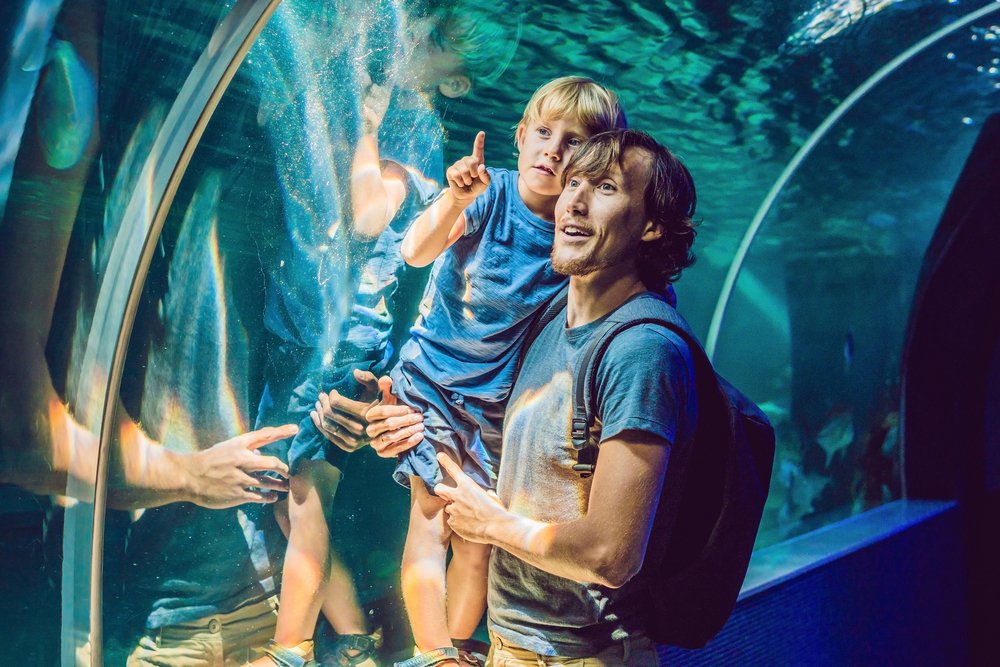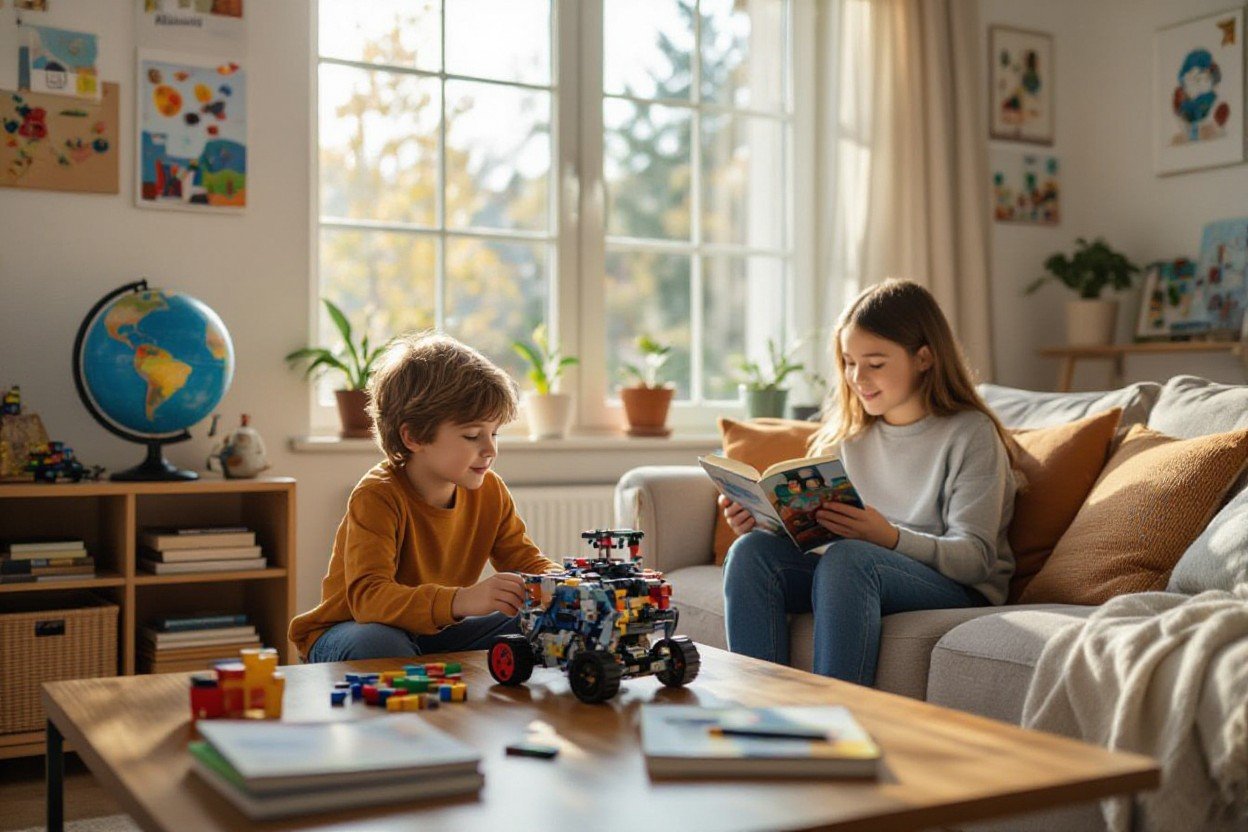
You might be wondering what unschooling really means and how it differs from traditional education. In unschooling, you guide your child’s learning without following a set curriculum, focusing instead on their natural curiosity and personal interests. While some worry that unschooling lacks structure and social opportunities, many families find it fosters deep, meaningful learning and nurtures independence. If you’re interested in exploring this flexible approach, check out my new “Unschooling for Grades K-5” book series on Amazon, designed to blend freedom, flexibility, and accountability for your child’s best growth experience.
Key Takeaways:
- Unschooling is a form of self-directed, informal learning without a fixed curriculum or traditional lessons, allowing children to follow their own interests and pace.
- The term was popularized by educator John Holt in the 1970s and emphasizes learning as a natural, integrated part of everyday life rather than a structured academic process.
- Unschooling contrasts with conventional schooling by rejecting standardized testing and rigid schedules, promoting learning through real-life experiences and diverse social interactions.
- Parents often choose unschooling to strengthen family bonds, nurture intrinsic curiosity, and provide educational freedom that adapts to each child’s unique needs and learning style.
- For families seeking supportive resources, the “Unschooling for Grades K-5” book series on Amazon offers a blend of freedom, flexibility, and accountability designed to enhance the unschooling experience for young learners.
The Origins of Unschooling: A Paradigm Shift
Unschooling emerged as a radical shift away from traditional education paradigms, challenging the notion that learning must follow a strict curriculum or institutional framework. This approach grew from dissatisfaction with schooling systems viewed as rigid and uninspiring, instead promoting learning as a natural, child-driven process. By putting freedom and trust at the forefront, unschooling encourages exploration and adapts education to fit your child’s unique needs and passions, rather than forcing them into predetermined molds.
John Holt and the Concept of Unschooling
John Holt, often called the father of unschooling, introduced the term in the 1970s to describe taking children out of school and trusting their innate curiosity to guide learning. Through his newsletter Growing Without Schooling, Holt emphasized freedom over formal lessons, believing children learn best when education integrates naturally with life. His work pushed against compulsory schooling laws and fostered an educational philosophy that values personal passion and the joy of discovery.
Deschooling vs. Unschooling: Key Differences
The term deschooling, coined by Ivan Illich, focuses on dismantling the compulsory school system itself, advocating for a societal shift away from institutionalized education. In contrast, unschooling specifically refers to the practice of child-led learning outside traditional school environments, often within a homeschooling context. While deschooling addresses systemic change, unschooling zeroes in on individualized freedom and informal learning experiences supported by the family.
Deschooling calls for the abolition of compulsory schooling laws and the transformation of societal attitudes towards education, pushing for a world where formal schools are not the central or mandatory source of learning. Unschooling, however, operates practically within existing legal frameworks by encouraging your child’s autonomy to explore learning on their own terms. Essentially, deschooling is a broader cultural critique and movement, while unschooling is a day-to-day educational philosophy and method you can adopt at home.

Unpacking the Appeals: Why Families Embrace Unschooling
Families often turn to unschooling because it offers a flexible, personalized approach that puts your child’s interests and rhythms at the center. Without rigid schedules or predefined curricula, learning flows naturally, making education less about compliance and more about discovery. Parents appreciate the chance to break free from conventional schooling’s constraints, fostering environments where curiosity drives growth and where families share meaningful time together, strengthening bonds that traditional school settings sometimes strain.
Nurturing Bonds: The Family Connection
Unschooling naturally weaves learning into daily family life, giving you more quality moments to connect with your child. Without the pressure of strict schedules, your interactions become opportunities for shared exploration, trust-building, and collaboration. This closeness deepens the parent–child relationship, letting you support your child’s unique interests while maintaining an active role in their development, unlike the often distant dynamic shaped by traditional schooling.
The Quest for Authentic Learning Experiences
Unschooling thrives on learning rooted in real-world experiences rather than textbooks or tests. You’ll find your child engaging with practical skills, creative projects, or community activities that feel meaningful to them. This approach respects the natural curiosity that expert John Holt highlighted, allowing your child to dive deeply into subjects on their own terms and pace, which can lead to deeper understanding and sustained motivation.
Delving further, unschooling encourages you to view learning as an integrated part of daily life—whether your child is cooking, tinkering with technology, or exploring nature. For example, a child fascinated by astronomy might spend evenings stargazing, using apps to identify constellations, and reading about space missions, all driven by personal passion rather than assigned homework. This authentic engagement allows learning to unfold organically, fostering critical thinking and creativity as your child navigates topics that truly resonate with them.
Child-Led Learning: The Heart of Unschooling
Child-led learning puts your child’s interests and choices front and center, allowing their natural curiosity to guide what, when, and how they learn. Instead of following a fixed syllabus, your child explores subjects that excite them, deepening engagement and understanding. This approach honors their individual pace and preferences, fostering motivation and long-term retention while encouraging responsibility for their own learning journey.
Curiosity-Driven Education
Curiosity acts as a powerful engine fueling your child’s desire to learn. When education is centred around what fascinates your child, they dive deeper into topics, often going beyond surface-level knowledge. This self-motivation reduces resistance, making learning joyful and meaningful rather than a chore. For example, a child interested in astronomy might spend hours exploring star charts, math, and physics naturally, without external pressure.
The Role of Environment in Facilitating Growth
The learning environment you create directly impacts your child’s growth. By surrounding them with stimulating materials—books, art supplies, musical instruments, or nature—you nurture a landscape ripe for exploration. This environment acts like a garden you tend, encouraging development rather than forcing lessons, inviting your child to discover and experiment freely.
Beyond simply filling your home with resources, the environment influences how your child feels about learning. Spaces designed for curiosity foster comfort and inspiration, while distracting or overly structured settings can stifle it. Many unschooling parents find success by blending access to diverse materials with flexible routines, allowing natural rhythms to guide the day. For instance, placing a microscope near the window invites spontaneous investigation of plants or insects, reinforcing learning through real-world experience. This thoughtful setup not only supports varied learning styles but also mirrors the wide range of stimuli children encounter in life, promoting well-rounded development.
Navigating Concerns: Addressing the Critics of Unschooling
Concerns about lack of structure, social skills, and academic preparedness often dominate critiques of unschooling, yet many parents find these worries rise from misunderstanding. You can create a nurturing environment tailored to your child’s pace, allowing for both exploration and deep knowledge acquisition. While some worry about motivation, unschooling leverages innate curiosity and self-direction to engage learners meaningfully.
Socialization and Community Building
You might worry about social opportunities when unschooling, but many find that it actually broadens their child’s social circles. Instead of limited age-segregated groups typical in schools, unschooled children often engage with people of all ages, fostering maturity and adaptability. Increasing numbers of local unschooling groups and meetups also offer peer interaction in relaxed environments, allowing your child to build meaningful friendships based on shared interests and learning styles, not just organized class time.
Academic Readiness and Developmental Support
Concerns about academic readiness often stem from the absence of traditional tests and grades in unschooling. However, your child’s education can include targeted support when needed, using mentors, community resources, or online tools tailored to their learning path. This flexibility allows your child to master concepts at their own pace, circumventing the “one-size-fits-all” pressure of schools while still providing the scaffolding necessary for success in standardized settings later on.
Many unschooling families incorporate periodic skill assessments or portfolio reviews to ensure their child is meeting developmental milestones. Some choose to supplement with specific activities—such as math clubs or writing workshops—to address areas where they want more structure or challenge. This personalized approach contrasts with remediation after falling behind in school, empowering your child to stay ahead through engagement and interest-driven learning while gaining academic foundational skills smoothly and supportively.
Practical Approaches: Implementing Unschooling at Home
Transforming your home into a vibrant learning space hinges on blending freedom with thoughtful support. Instead of imposing rigid lessons, you cultivate curiosity by surrounding your child with diverse materials and experiences that invite exploration. This nurtures a natural rhythm of discovery, where learning flows seamlessly from daily life. Small changes—like having books accessible, tools for hands-on projects, or spaces for creative play—can spark interests that lead to rich, self-guided education.
Creating a Learning-Rich Environment
Setting up your home to ignite curiosity means weaving learning into everyday surroundings. Stock areas with varied resources such as art supplies, science kits, musical instruments, and a rotating selection of books tailored to your child’s interests. Incorporate technology thoughtfully, like educational apps or documentaries, and invite engagement with the community through museums, parks, or workshops. This steady infusion of materials and experiences creates a supportive backdrop that encourages ongoing, self-paced exploration.
Encouraging Initiative and Exploration
Fostering independence involves stepping back to let your child take charge of their learning journey. When they show interest in a topic, join in by providing resources or arranging field trips, but let their curiosity lead the direction and depth. Avoid steering them towards predetermined goals; instead, celebrate their questions and attempts. This approach builds confidence and critical thinking, allowing your child to develop motivation rooted in personal passions rather than external pressures.
Diving deeper, encouraging initiative means creating opportunities for your child to pursue projects that matter to them—whether that’s coding a game, learning to cook, or mastering a sport. Provide gentle guidance by asking open-ended questions and suggesting resources without overwhelming their autonomy. For example, if your child wants to explore astronomy, help them find a telescope and locate local stargazing events, then step back as they probe into the subject on their own terms. Supporting this way promotes resilience and adaptability, important skills for navigating challenges beyond formal education.
Final Words
Following this, you can see that unschooling offers a unique approach to learning that puts your child’s interests and curiosity first, allowing education to happen naturally and at their own pace. If you’re looking for guidance, check out my new “Unschooling for Grades K-5” book series on Amazon, designed to blend freedom, flexibility, and accountability for a balanced learning journey. This approach helps you create an enriching environment where your child can truly thrive and enjoy the adventure of learning every day.
FAQ
Q: What exactly is unschooling?
A: Unschooling is an educational approach that emphasizes self-directed, informal learning without a set curriculum or formal lessons. It allows children to explore subjects and activities driven by their own interests and curiosity, fostering learning naturally through everyday experiences rather than traditional classroom instruction.
Q: How does unschooling differ from traditional homeschooling?
A: While unschooling is a subset of homeschooling, the key difference lies in curriculum and structure. Traditional homeschooling often follows a set curriculum with planned lessons and objectives, whereas unschooling removes formal structure, allowing children to guide their own learning based on personal passions and real-world experiences.
Q: What motivates parents to choose unschooling for their children?
A: Parents choose unschooling for various reasons, including a desire to strengthen family bonds, reduce the stress associated with conventional schools, and cultivate a love of learning that is driven by the child’s interests. Some parents also value the flexibility unschooling provides, allowing children to learn at their own pace and in ways that best suit their individual learning styles.
Q: How do unschooled children develop social skills without traditional school environments?
A: Unschooling often involves interaction with a diverse range of ages and people in the community, not just peers in the same age group. This variety can help children develop social skills in more natural contexts. Additionally, unschooling families frequently engage in community activities, group meetups, or co-ops that provide social opportunities for children.
Q: Are there resources available to support families who want to try unschooling?
A: Yes, there are many resources designed to support families interested in unschooling. One such resource is the new Unschooling for Grades K-5 book series available on Amazon. These books offer a balanced approach that integrates freedom, flexibility, and accountability, making it easier for families to implement unschooling effectively while ensuring meaningful progress.
